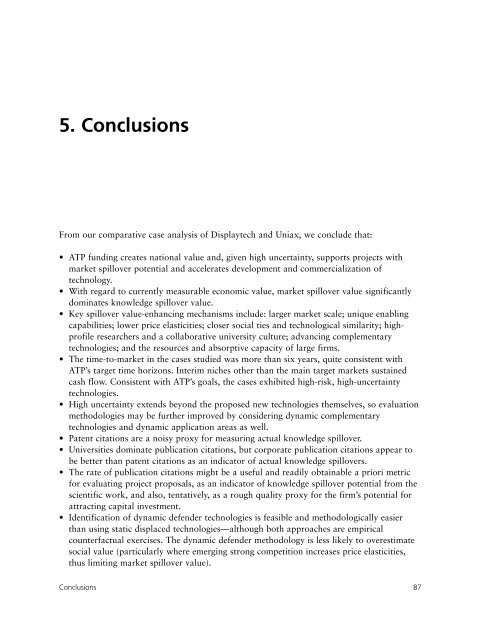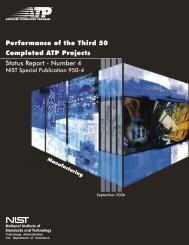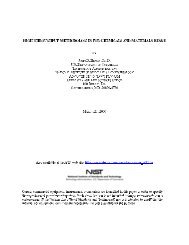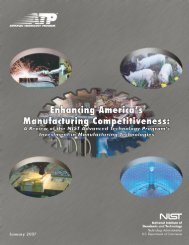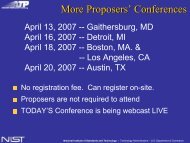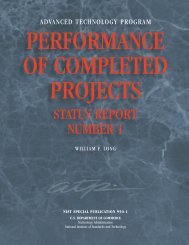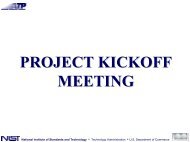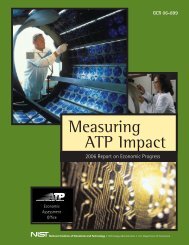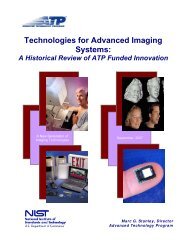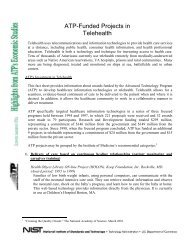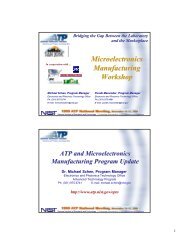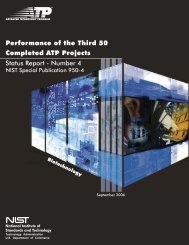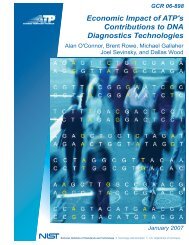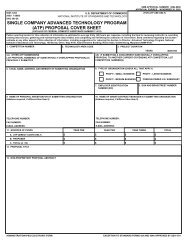Direct and Spillover Effects of ATP-Funded Photonics Technologies
Direct and Spillover Effects of ATP-Funded Photonics Technologies
Direct and Spillover Effects of ATP-Funded Photonics Technologies
- No tags were found...
You also want an ePaper? Increase the reach of your titles
YUMPU automatically turns print PDFs into web optimized ePapers that Google loves.
5. ConclusionsFrom our comparative case analysis <strong>of</strong> Displaytech <strong>and</strong> Uniax, we conclude that:• <strong>ATP</strong> funding creates national value <strong>and</strong>, given high uncertainty, supports projects withmarket spillover potential <strong>and</strong> accelerates development <strong>and</strong> commercialization <strong>of</strong>technology.• With regard to currently measurable economic value, market spillover value significantlydominates knowledge spillover value.• Key spillover value-enhancing mechanisms include: larger market scale; unique enablingcapabilities; lower price elasticities; closer social ties <strong>and</strong> technological similarity; highpr<strong>of</strong>ileresearchers <strong>and</strong> a collaborative university culture; advancing complementarytechnologies; <strong>and</strong> the resources <strong>and</strong> absorptive capacity <strong>of</strong> large firms.• The time-to-market in the cases studied was more than six years, quite consistent with<strong>ATP</strong>’s target time horizons. Interim niches other than the main target markets sustainedcash flow. Consistent with <strong>ATP</strong>’s goals, the cases exhibited high-risk, high-uncertaintytechnologies.• High uncertainty extends beyond the proposed new technologies themselves, so evaluationmethodologies may be further improved by considering dynamic complementarytechnologies <strong>and</strong> dynamic application areas as well.• Patent citations are a noisy proxy for measuring actual knowledge spillover.• Universities dominate publication citations, but corporate publication citations appear tobe better than patent citations as an indicator <strong>of</strong> actual knowledge spillovers.• The rate <strong>of</strong> publication citations might be a useful <strong>and</strong> readily obtainable a priori metricfor evaluating project proposals, as an indicator <strong>of</strong> knowledge spillover potential from thescientific work, <strong>and</strong> also, tentatively, as a rough quality proxy for the firm’s potential forattracting capital investment.• Identification <strong>of</strong> dynamic defender technologies is feasible <strong>and</strong> methodologically easierthan using static displaced technologies—although both approaches are empiricalcounterfactual exercises. The dynamic defender methodology is less likely to overestimatesocial value (particularly where emerging strong competition increases price elasticities,thus limiting market spillover value).Conclusions 87


